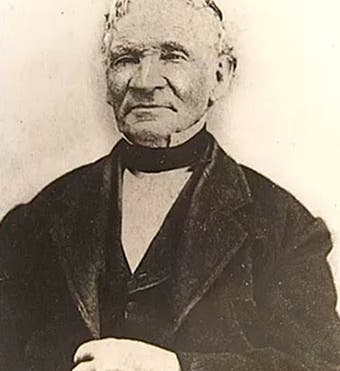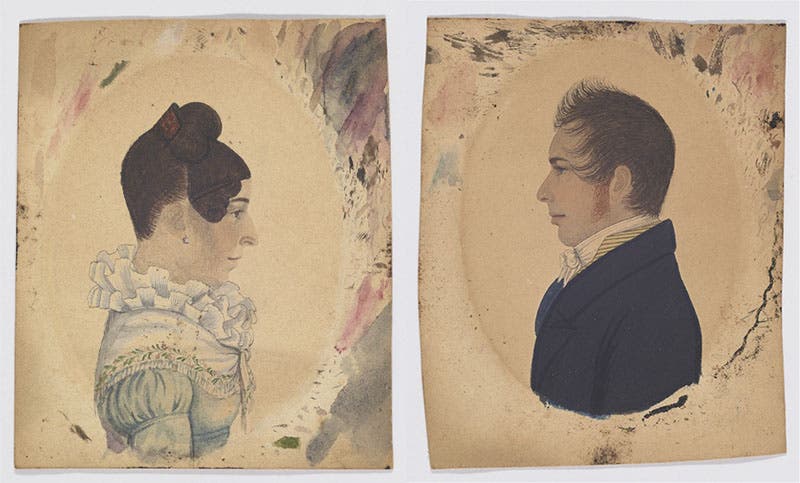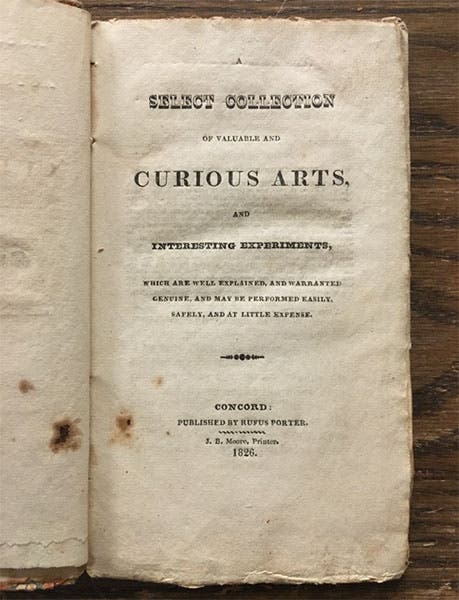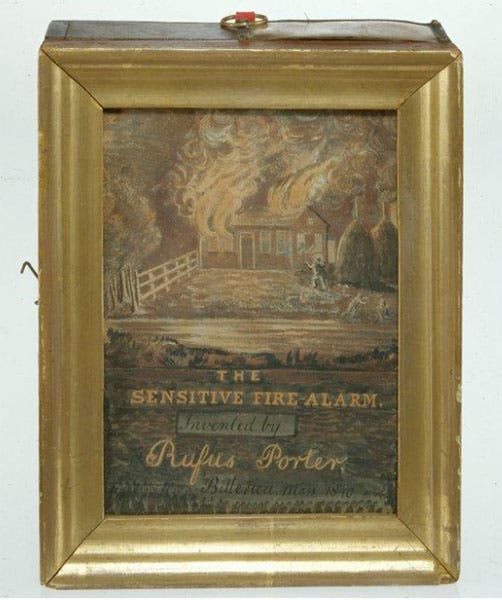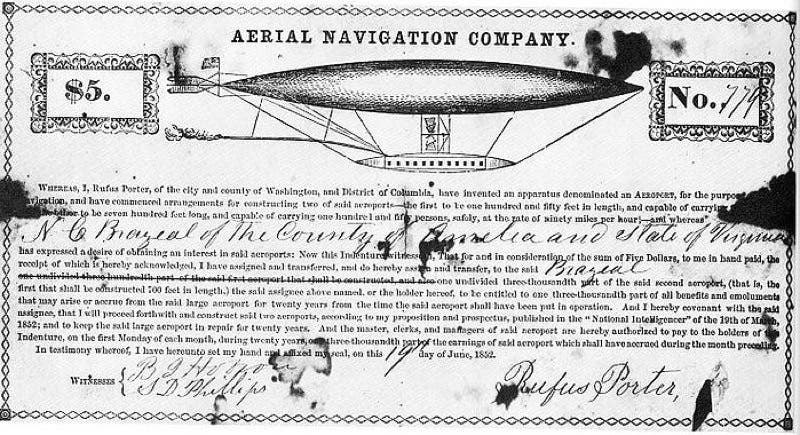Scientist of the Day - Rufus Porter
Rufus Porter, an American artist, inventor, and journalist, was born on May 1, 1792 (first image). After his family moved from Massachusetts to Bridgton, Maine, he was sent to nearby Fryeburg Academy, a preparatory school for young men planning to attend Dartmouth College. His formal education ended six months later, and at the age of 12, he left Fryeburg to become an itinerant farmer, shoemaker, and musician. He served in the state militia during the War of 1812, briefly ran a dancing school in New Haven, and according to some sources, traveled to Hawaii on a merchant vessel.
Beginning in 1819, Porter started earning money as a portrait painter. He traveled south from New England, gradually becoming more proficient in his craft. Soon after arriving in Alexandria, Virginia, he built his own camera obscura to expedite the painting process. For a dollar, Porter promised that he could capture a person’s likeness in just fifteen minutes (second image).
By embracing technologies like the camera obscura, which allowed for the cheaper and quicker production of portraits, Porter was responding to a growing popular demand for art in antebellum America. He also believed in making artistic tools and processes more accessible to ordinary citizens, not just those who could afford to attend art school. Following his return to New England, he compiled many of his favorite tips and tricks into an instructional manual (third image) entitled A Select Collection of Curious Arts and Interesting Experiments. This book contained formulas for numerous inks, varnishes, and glues, as well as instructions that would enable people to create their own landscape murals (one of Porter’s later artistic specialties), copperplate engravings, and glass jewelry. For those with a more scientific bent, he also outlined several chemical and electrical experiments, including information on how to build a galvanic pile.
Porter’s interest in science and technology was not limited to artistic pursuits. He was also an accomplished amateur inventor with dozens of patents to his name. Among his creations were a cane that could transform into a chair, a floating dry dock, and a new form of “sensitive” fire alarm (fourth image).
Porter’s most ambitious invention was a “Travelling Balloon, or Flying Machine,” which he first described in a November 1834 article in Mechanics’ Magazine (fifth image). He envisioned filling up a 500-foot-long balloon with hydrogen gas, which he calculated would provide enough lift to carry one hundred passengers, along with their baggage and provisions. The entire apparatus would be pushed forward by a steam-driven propeller, allowing the craft to travel at speeds of fifty miles per hour.
Porter built working models of his airship (or “aeroport,” as he called it) during the 1840s and 1850s and even petitioned the U.S. Senate to sponsor the construction of a full-scale dirigible. When the government refused his request, he established the Aerial Navigation Company, which offered investors the chance to support his work for the cost of $5 per share (sixth image). This funding proved sufficient to begin construction, but ultimately Porter’s aeroport never got off the ground.
In between his artwork and his inventions, Rufus Porter also found time to dabble in the world of publishing. In 1841, he secured a controlling interest in the New York Mechanic, a weekly scientific newspaper. Four years later, Porter invested $100 to establish a new publication dedicated to providing “useful information and instruction in various Arts and Trades; Curious Philosophical Experiments; Miscellaneous Intelligence, Music and Poetry.” Although he ceded editorial control two years later, Porter’s new magazine, Scientific American, proved remarkably successful and has remained in print to this day (seventh image). The Linda Hall Library owns a nearly complete run; only the very first volume from 1845 is missing from our collection.
Despite his numerous contributions to early American art and science, Porter remains a relatively obscure figure. Fortunately, in 2005 the Rufus Porter Museum opened near his childhood home in Bridgton, Maine. The museum is open seasonally from June through October, and its collection contains several of Porter’s paintings, models of his inventions, and early editions of Scientific American. In addition, a new exhibition, Rufus Porter’s Curious World: Art and Invention in America, 1815-1860, is scheduled to open at the Bowdoin College Museum of Art in December 2019. The museum is also co-publishing an exhibition catalog with Penn State University Press, which may be of interest for those unable to make the trip to Maine.
Benjamin Gross, Vice President for Research and Scholarship, Linda Hall Library. Comments or corrections are welcome; please direct to grossb@lindahall.org.

